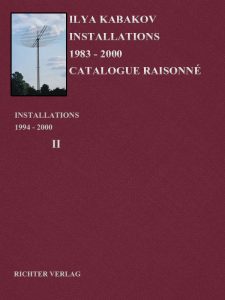The First Image of the Car
YEAR: 1995
CATALOG NUMBER: 94
PROVENANCE
The Artist
Not preserved
EXHIBITIONS
Istanbul
New Orientation. The Vision of Art in a Paradoxical World, 10 Nov 1995 — 10 Dec 1995
DESCRIPTION
The underground reservoir belongs to Byzantine structures of the sixth and seventh centuries in Istanbul and is surrounded on all sides by concrete walls 12 meters high. The ceiling is supported by round stone columns erected perpendicularly, running in rows with high arched vault coverings. At some time in the past, this reservoir was filled to the edges with water. Today it is a hall of gigantic proportions that is semi-dark and mysterious. Water in it is just a bit higher than knee-level, and for the many tourists, there are special wide footpaths running along the walls, poorly lit by electric bulbs. The support columns rise right out of the water, and sometimes you can see in the water large fragments of stones, you can hear from all sides the mysterious sound of stones falling from the ceiling. The subject and form of the installation, just like in the installation An Extraordinary Incident, was dictated by the situation and atmosphere of this place, although their contents differ.
Near the wall of the reservoir, a fragment of an ‘ancient’ rock rises up out of the water. This rock resembles stones in other parts of the pool. The light of a bulb aimed at it from above illuminates it, the lower part of this rock, part of the wall and the lower part of the column located nearby. All of it together forms a mysterious picturesque corner which stands out from the surrounding gloom, and it can be seen easily from above from the nearby footpaths intended for the viewers. If you stand on this path and look closely at the ‘rock,’ you can see a clearly discernible image on the part of the rock facing the bridge and on the underwater part. The colored drawing depicts an ancient two-wheeled chariot, in which stands an ornately dressed rider. But what is harnessed to the cart is not a horse or a mule, but a modern automobile. The same kind of harness as those used for horses is attached to it and the car is steered by two reins attached by the two ends to a pole running through the front window of it. The subject of the ‘fragment of an ancient fresco’ on the rock might appear unbelievable to the passing tourist, or he might not see it at all if it weren’t for the board with an explanation. The board is placed on the handrail in this spot and it describes the subject of this ‘fresco’ in detail.
Hence, this installation, just like the installation in the Church of St. Irene, also consists of three parts: the object, the barriers, and an explanatory text. The only difference is that the ‘object’ in St. Irene was already there and it is genuine, whereas in this installation it is specially and ‘provocatively’ made. Both the first and second installations are aimed at the reaction of the ‘unprepared’ viewer, ready to believe in the veracity of what is explained here. Moreover, this standard situation – an explanation next to a historical object – should automatically invoke a feeling of total belief. This playing with a standard tourist situation is precisely what lies, in essence, at the basis of both the first and second installations.
Images
Literature








